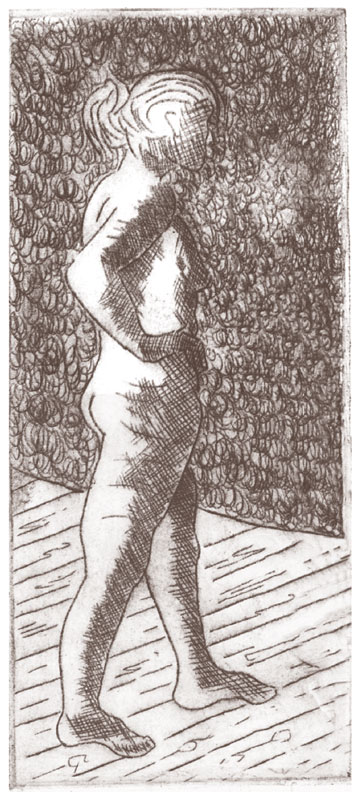A Life Model's View

Life-modelling is an interesting and skilled job, so we asked Pershore Arts member and model, Hazel Green, to tell us a little more about her experiences.
“I have been modelling periodically for many years. It is hard work and of course you do have to be able to keep still. It helps to have a certain attitude toward one’s own body and nudity in general. We all have bodies and they are as unique as a finger print.
I first modelled briefly for friends when I was seventeen. In my early twenties, I was employed part-time at a college offering predominantly recreational art courses for adults. This included drawing, painting and sculpture. It is interesting, varied work, meeting and working with a wide range of characters with diverse approaches to the subject. I feel part of the creative process and I'm sure every life model must bring something different to the job. After forty years I still think that the life model brings something of themselves to the fore too.
I have worked in many situations with school pupils, college students, vocational and recreational groups of artists as well as “one to one” with professional artists and sculptors. “One to one” is inevitably a closer and more relaxed atmosphere and with sculptors, the measuring callipers are often used. In all these working environments mutual respect is vital. With experience I know pretty well what I am capable of in terms of poses and their duration but that does not mean to say that I don't sometimes get it wrong and thinking “How did I get myself into this?”
I worked for many years at Worcester School of Art and Design. You may think modelling for a group of young teenagers might be a problem (I was past my first youth) and I was asked this when interviewed for the post. In fact, the reverse can be true; when new to Life Drawing, it is often the students who have a problem with nudity. If this is the case, I deliberately create a pose to give as little initial discomfort as possible, by ensuring nobody can look me in the eye or by turning away from certain individuals. Embarrassment soon passes and the activity becomes more abstract. Some participants will be concerned by what the model thinks of their results. There is no need – as long as people are trying and/or enjoying themselves, that is fine, and not everybody wants to work as a photorealist. Of course, I draw the line at anything offensive!
One thing I soon learnt was to arrive prepared. In my bag I always have something to stand on, something to sit on and a piece of fabric as a drape over props or myself in case I need it. Not everybody realises how cold and hard a floor can be, for example!
I have recently been reading ’England’s Mistress’ a biography of Emma Hamilton by Kate Williams. It describes in detail, life in London in the late 1700s. With 30,000 prostitutes in London’s Covent Garden, it amused me to read that they did not like to work as life models because it was considered beneath them! I laughed out loud. My response to this is that as a professional life model, I feel at ease with what I do and not in the least demeaned by it.”
Hazel Green
This article is available as a PDF file which is more suitable for printing
View more articles

